Tucked beyond the towering peaks of the Himalayas, Mustang in Nepal remains one of the world’s last hidden frontiers. Once the fabled Kingdom of Lo, this remote region has safeguarded its Tibetan Buddhist heritage for centuries. Restricted to outsiders until the 1990s, Mustang has remained largely untouched by modernity, preserving a way of life that feels frozen in time. Here, history isn’t confined to museums—it’s woven into daily rituals, ancient monasteries, and the very fabric of its breathtaking landscapes.
The terrain is as dramatic as its past. A vast high-altitude desert, it stretches across wind-carved cliffs, deep canyons, and the striking Kali Gandaki Gorge—the deepest on Earth. Flanked by the snow-capped giants of Nilgiri and Dhaulagiri, Mustang’s arid, sculpted beauty mirrors that of the Tibetan plateau, creating an ethereal landscape that invites both adventure and reflection. This is a land where silence speaks, and every turn reveals a view unlike any other in Nepal.
Culture thrives in Mustang’s timeless villages, where Tibetan Buddhist and Bon traditions endure. In places like Tsarang and Dhakmar, prayer flags dance in the wind, chortens mark sacred paths, and the walled city of Lo Manthang remains a bastion of spiritual life. Here, centuries-old monasteries stand as living testaments to faith, with monks continuing the same rituals practised for generations.
For those drawn to the mysteries of the past, the legendary sky caves hold secrets etched into history. Hollowed into sheer cliffs more than 2,000 years ago, these ancient dwellings conceal murals, Buddhist relics, and burial sites that whisper of lost civilizations.
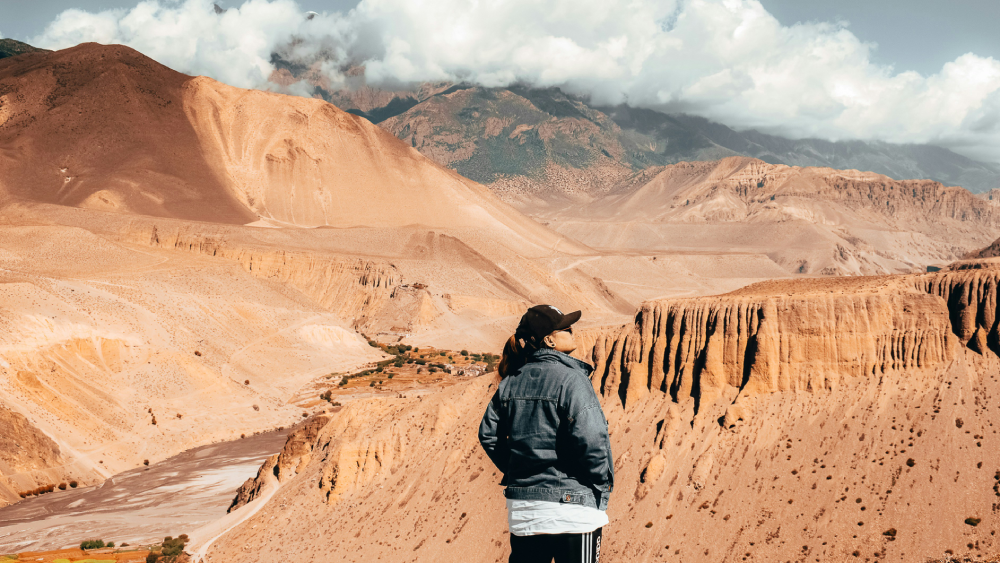
Where is Mustang in Nepal?
Nestled in the remote northwestern reaches of Nepal, Mustang unfolds like a hidden kingdom beyond the Himalayas. Bordering Tibet, China, this extraordinary region is part of the Annapurna Conservation Area, divided into the contrasting landscapes of Lower and Upper Mustang. Its isolation has safeguarded its dramatic terrain and a culture that feels suspended in time.
The place's location offers an unparalleled glimpse into a world where tradition endures, landscapes remain untamed, and modernity has barely left a trace.
Geography of Mustang: The Desert Beyond the Himalayas
The geography of Mustang is as dramatic and awe-inspiring as its history. Nestled in the rain shadow of the Annapurna and Dhaulagiri ranges, Mustang's landscape is starkly different from the lush valleys and terraced fields that characterize much of Nepal. The region is a high-altitude desert with rugged terrains that include wind-carved cliffs, deep canyons, and expansive plateaus. The Kali Gandaki Gorge, which cuts through Mustang, is the deepest gorge on Earth, adding to the region's breathtaking geological diversity.
The arid and sculpted beauty of Mustang mirrors that of the Tibetan plateau, creating an otherworldly environment that feels both ancient and timeless. The landscape is dotted with chortens and mani walls, and every village seems to rise organically from the earth, blending seamlessly with the terrain. The contrast between the barren land and the vibrant prayer flags fluttering in the wind adds to the mystical aura that pervades the region.
Mustang's unique geography not only shapes its stunning vistas but also influences the lifestyle and culture of its inhabitants. The harsh climate and challenging terrain have fostered a resilient community that has adapted to the environment with remarkable ingenuity. From the construction of fortified villages to the cultivation of hardy crops, the people of Mustang have developed ways to thrive in this seemingly inhospitable land, creating a harmonious relationship with their surroundings.
History of Mustang: A Kingdom Preserved in Time
Once an independent Himalayan kingdom—known as the Kingdom of Lo—it was a vital crossroads for trade between Nepal and Tibet. Its strategic location brought prosperity, yet its isolation allowed it to develop a distinct identity, untouched by outside influence. For centuries, the region thrived as a cultural and economic hub, its traditions preserved within its fortress-like landscapes.
At the heart of this ancient kingdom lies Lo Manthang, a walled city founded in 1380 by King Ame Pal. This historic enclave, with its timeworn monasteries and labyrinthine alleys, remains a living museum of the past. Restricted to outsiders until 1992, the region has safeguarded its Tibetan Buddhist heritage, where intricate murals, sacred rituals, and centuries-old monasteries still stand as echoes of a time long preserved.
The region's Tibetan Buddhist and Bon traditions are evident in every aspect of daily life, from the architecture of its monasteries to the rituals and festivals that punctuate the calendar. The villages, such as Tsarang and Dhakmar, are living museums where ancient customs are preserved and practiced with reverence.
Culture here is not confined to the walls of a museum but is an integral part of everyday life. The traditional mud-brick houses with their flat roofs and whitewashed walls are designed to withstand the harsh climate, and their interiors are often adorned with religious iconography. The chortens and mani walls that dot the landscape serve as constant reminders of the region's spiritual heritage, and the sound of prayer wheels and chanting monks is a common backdrop to daily activities.
Upper Mustang in Nepal
Upper Mustang is the northernmost part of Mustang, set beyond the dramatic Kali Gandaki Gorge and bordering the Tibetan Plateau. Unlike Lower, which sees more influence from mainstream Nepali culture, the Upper region remains distinctly Tibetan in its traditions, language, and way of life. Its remote location and restricted access have helped preserve its ancient heritage, making it one of the last places where Tibetan Buddhism thrives in its purest form.
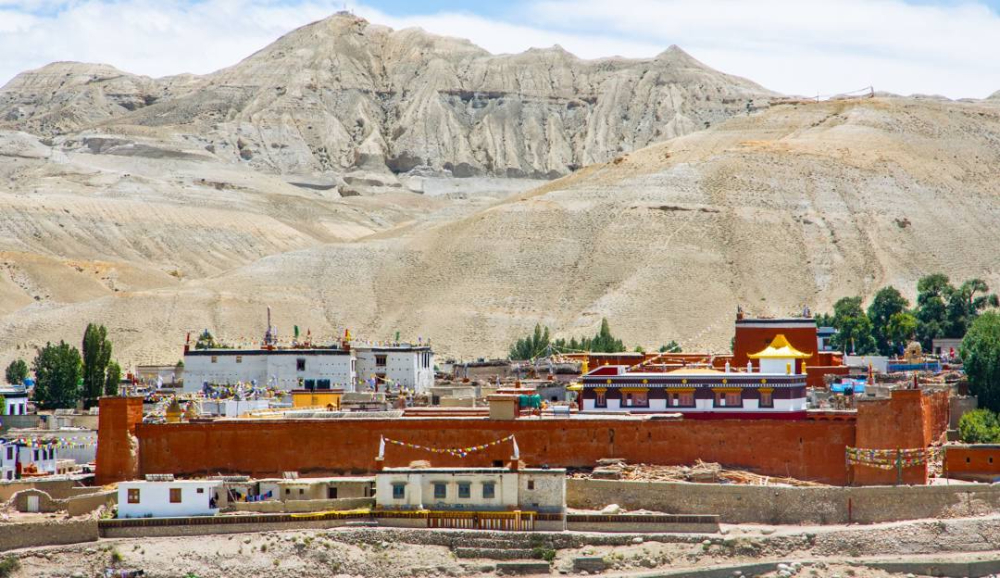
This mystical land is home to Lo Manthang, the last remaining walled city of Tibetan civilization outside Tibet. The region’s landscape is marked by over 1,000 ancient sky caves, hewn into cliffs more than 2,000 years ago. These caves hold traces of lost civilizations—murals, Buddhist relics, and burial sites that whisper stories of the past.
Each year, Upper Mustang comes alive during the grand Tiji Festival, a sacred Buddhist ritual in Lo Manthang that celebrates the victory of good over evil, reinforcing the deep spiritual roots of this extraordinary region.
Timeless Tibetan Culture in Mustang
The cultural identity here is deeply intertwined with Tibetan Buddhism, its traditions preserved for generations in this remote and isolated region. Monasteries such as Thubchen, Jampa Gompa, and Chosser Cave stand as spiritual centres, their ancient murals and sacred relics offering a glimpse into its enduring heritage. These monasteries remain active places of worship, where monks uphold rituals passed down through centuries.
Daily life is shaped by Buddhist customs, from the fluttering prayer flags that send prayers into the wind to elaborate ceremonies honouring deities. Festivals like the Tiji Festival and the annual Lama Dance are not just celebrations but powerful spiritual gatherings, reinforcing the deep-rooted faith of the Mustangi people. These traditions, performed against a backdrop of stark Himalayan landscapes, create an atmosphere that feels untouched by time.
Beyond Buddhism, Mustang in Nepal also holds one of the last Bon Buddhist villages in the world—Lubra. Bon, an ancient spiritual tradition predating Buddhism, centres on nature worship, ancestral reverence, and mystical rituals. In Lubra, locals practice Bon customs through sacred chants, fire offerings, and prayers to mountain spirits, preserving a belief system that has all but disappeared elsewhere.
The Mustangi Locals
The people of Mustang, particularly the Lobas (people of Lo), have preserved their ancient customs through centuries of isolation. These locals live in harmony with the land, keeping their Tibetan traditions intact, from their language and dress to their spiritual beliefs. Known for their warmth and hospitality, the Lobas remain deeply connected to their heritage, maintaining a lifestyle that reflects the time-honoured practices of their ancestors.
In the Lower region, the Thakali people uphold a unique way of life centred around four pillars: agriculture, trade, religion, and family. Agriculture, especially barley cultivation, sustains their livelihoods, while their centuries-old trade routes to Tibet continue to shape their community. Tibetan Buddhism remains integral to their daily existence, influencing every aspect of their cultural fabric, from rituals to celebrations.
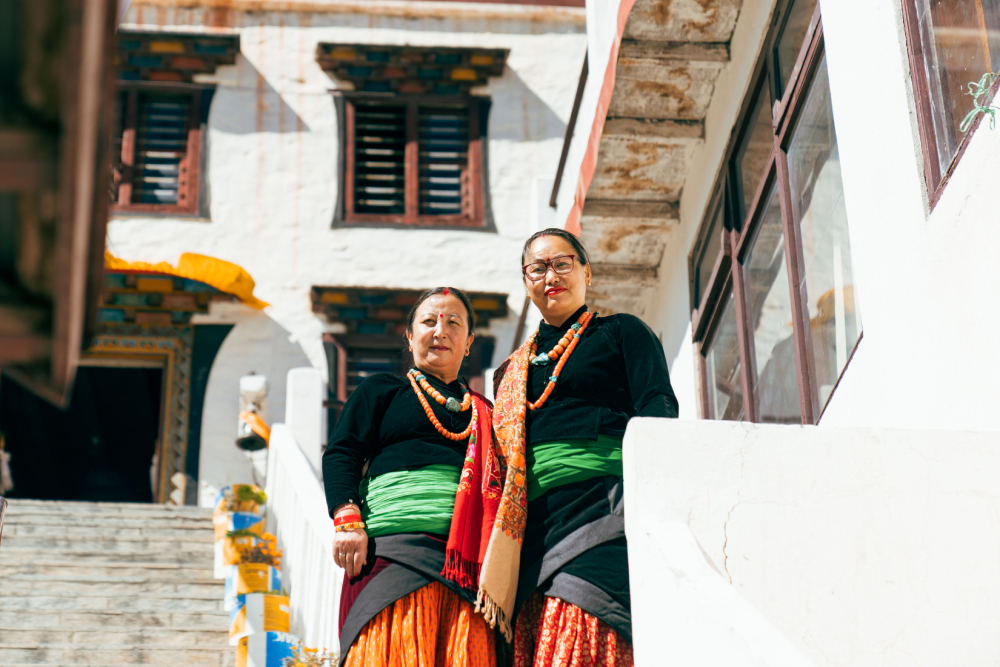
The homes of the Mustangi people are crafted to withstand the harsh conditions of their high desert environment. Built from mud bricks with flat roofs, these homes are designed to protect against the cold winters and fierce winds. The sturdy yet simple construction reflects the resourcefulness of the region's people, who make the most of the materials available to them.
A unique and rare practice here is polyandry, where one woman may marry multiple brothers. This tradition, which ensures the preservation of family wealth and agricultural stability, remains a defining feature of their society. It is just one of the ways the Mustangi people have maintained their cultural integrity, preserving a way of life that has remained unchanged for generations.
The Local Cuisine of Mustang
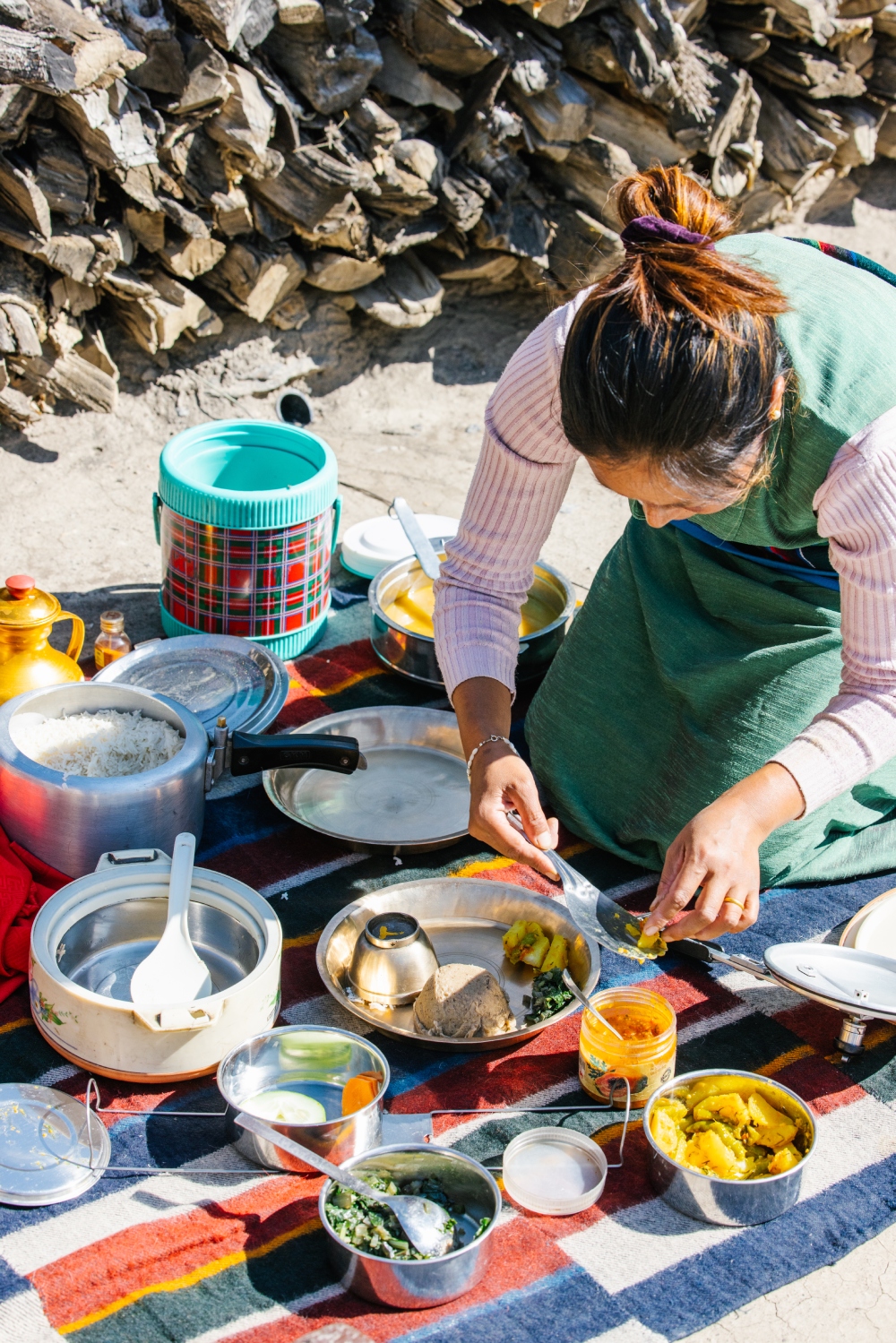
The cuisine here is a reflection of its harsh environment and the resourcefulness of its people. Traditional foods are hearty and designed to provide sustenance in the high-altitude, cold climate. Tsampa, a type of roasted barley flour, is a staple food that can be eaten dry or mixed with tea or water to make a nutritious porridge. This versatile food is easy to prepare and provides essential nutrients, making it a mainstay of the Mustang diet.
Another popular dish is Thukpa, a hearty noodle soup that combines meat, vegetables, and spices to create a warming and flavorful meal. The ingredients can vary based on availability, but the dish is always designed to provide warmth and nourishment. Momos, or Tibetan dumplings, are also a common food, often filled with meat or vegetables and served with a spicy dipping sauce. These dumplings are a favorite comfort food and are enjoyed by both locals and visitors.
Butter tea, known as Po Cha, is a traditional beverage that is both warming and energizing. Made from tea leaves, yak butter, and salt, this drink is a perfect antidote to the cold weather and high altitude. The unique flavor and high-calorie content make it an essential part of the regular diet.
Why Mustang in Nepal Should Be Your Next Destination to Travel
The place offers a rare chance to step away from the fast pace of modern life and immerse yourself in a world where time seems to have stood still. The region, with its preserved traditions and rich cultural heritage, remains largely untouched by mass tourism. Historical architecture, ancient monasteries, and medieval towns like Lo Manthang offer a glimpse into a bygone era, allowing visitors to connect with the past in a way few places can.
A Chance to Experience Tibetan Buddhist Heritage in Its Purest Form
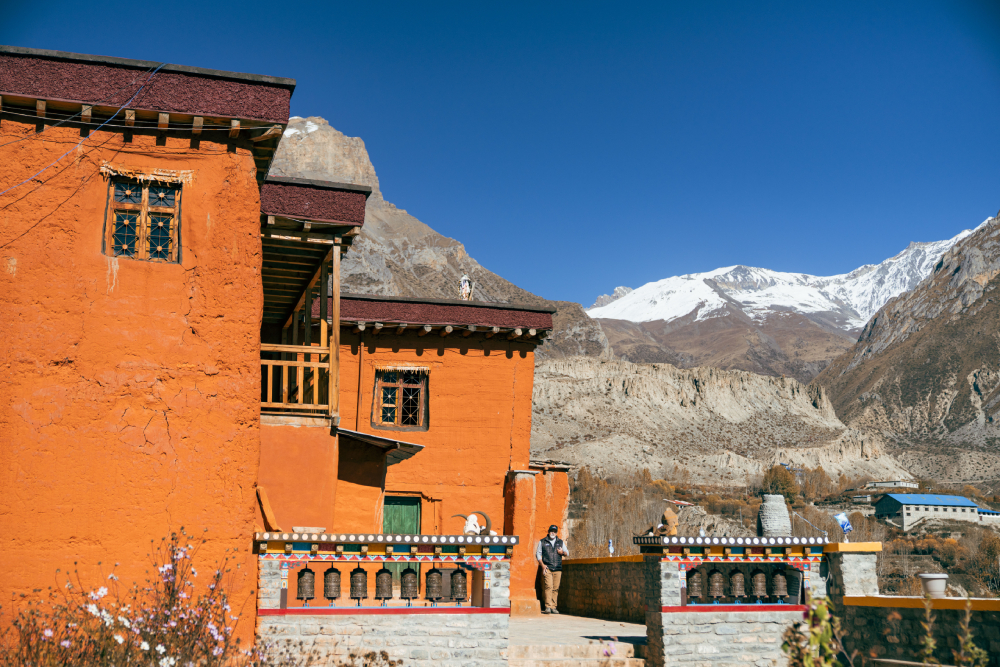
Mustang is one of the last places where Tibetan Buddhist traditions continue unchanged, preserving practices that have endured for centuries. The region is home to ancient monasteries such as Thubchen and Jampa Gompa, where spiritual practices remain at the heart of daily life. Visitors can witness the sight of prayer flags fluttering in the wind and experience rituals passed down through generations.
A Landscape Offering Both Adventure and Serenity
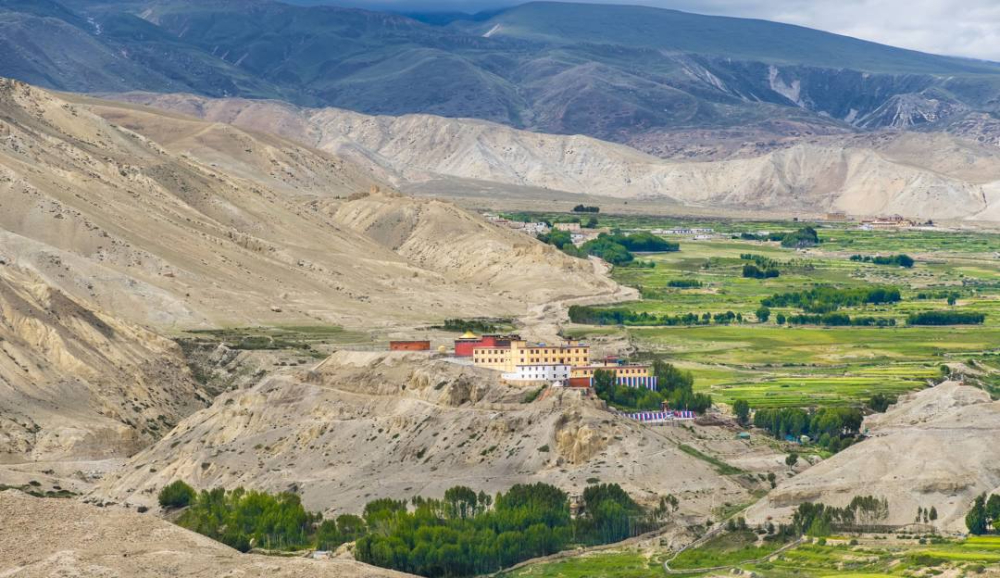
Mustang’s landscape offers a rare blend of adventure and tranquillity, where arid, desert-like terrain meets the towering peaks of the Himalayas. The rugged environment creates an otherworldly experience for trekkers, with challenging routes like the journey to Lo Manthang. At the same time, the region's remote and serene atmosphere provides a peaceful escape. With its high-altitude desert, winding canyons, and dramatic rock formations.
Limited Tourism for Authenticity of the Experience
While there is no strict limit on visitor numbers, the USD 500 restricted area permit ensures that Mustang in Nepal remains a less-visited, exclusive destination. This regulation helps maintain the region’s natural beauty and cultural heritage, keeping it largely untouched by mass tourism. The limited number of travellers allows for a more intimate experience, free from the distractions of large crowds.
What to Do in Mustang?
Mustang offers an unparalleled opportunity to step back in time, where history and culture are vibrant and well-preserved. Roam Lo Manthang's ancient alleyways and visit the royal palace, where echoes of past kings still resonate. Discover centuries-old monasteries, hidden caves, and awe-inspiring landscapes that have remained unchanged for centuries.
For adventurers, the barren desert landscapes provide a challenging yet rewarding trek, passing remote villages untouched by modern influences. Experience the grand Tiji Festival, a vibrant celebration of Tibetan Buddhist culture, or take a horseback ride across the rugged terrain, offering a unique perspective of this timeless world.
Where to Stay in Mustang?
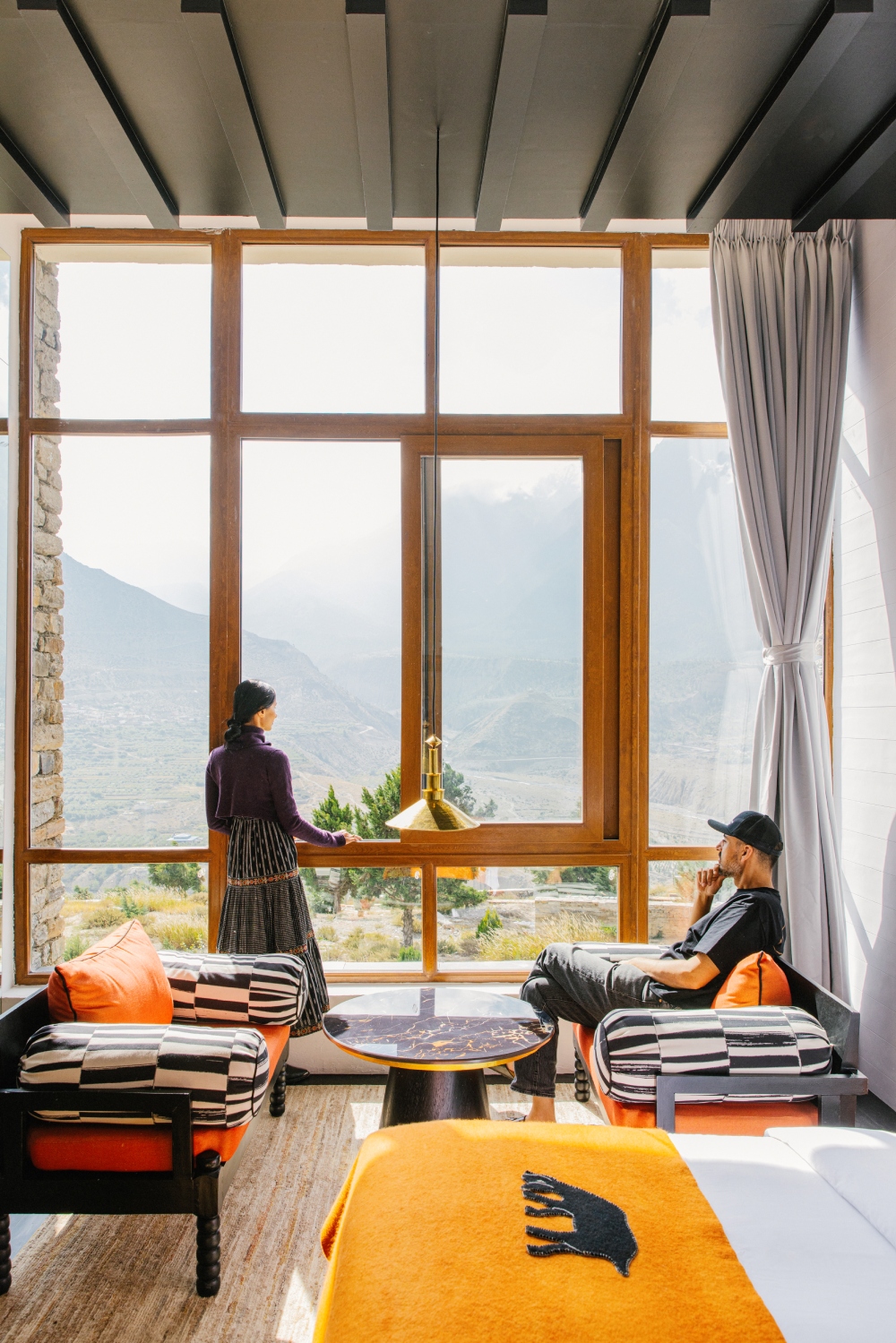
You can immerse yourself in authentic hospitality by staying in traditional boutique lodges, where the warmth of local customs welcomes you. Comfortable guesthouses, blending traditional charm with modern amenities, offer trekkers a cosy retreat, especially for those venturing into Upper Mustang.
For a more refined experience, choose from high-end lodges like Shinta Mani Mustang in Jomsom, Om's Home in Jomsom, Hotel Lo Mustang in Muktinath, Mandala Resort in Lo Manthang, or The Royal Mustang Resort in Lo Manthang. These accommodations provide a perfect blend of comfort and cultural immersion, making for an unforgettable stay in this enchanting region.
Weather Conditions and Best Time to Visit Mustang in Nepal
The best time to visit the destination depends upon the weather and road conditions. The following are the times to visit.
Spring (March- May)
Spring is a popular season for the tour. The sky is clear, and the weather is warmer than other times. The landscape is colourful. The Tiji Festival usually happens in May according to the Tibetan Lunar calendar. In May, it's possible to celebrate the Tiji Festival in Lo Manthang with the locals, making the tour more special. The Tibetan New Year also typically lies between January to Early March. So you may also get to celebrate the Tibetan New Year in spring. However, it can be crowded because of the festival. Also, the Upper area is windier in the Spring.
Summer (June- September)
Summer is also a great time to visit. The weather is warm, and the landscapes are lush and green. The crowds are smaller compared to other seasons. The Yartong Festival, which usually happens at the end of September according to the Tibetan Lunar Calendar, can also be enjoyed. While there is monsoon rain from July to September, it is usually not a big problem since Mustang in Nepal receives little rainfall throughout the year.
Autumn (September-November)
Autumn is considered the peak season to visit. The clear skies and pleasant temperatures make it a popular time to travel. However, because it is peak season, accommodation prices and crowds may increase.
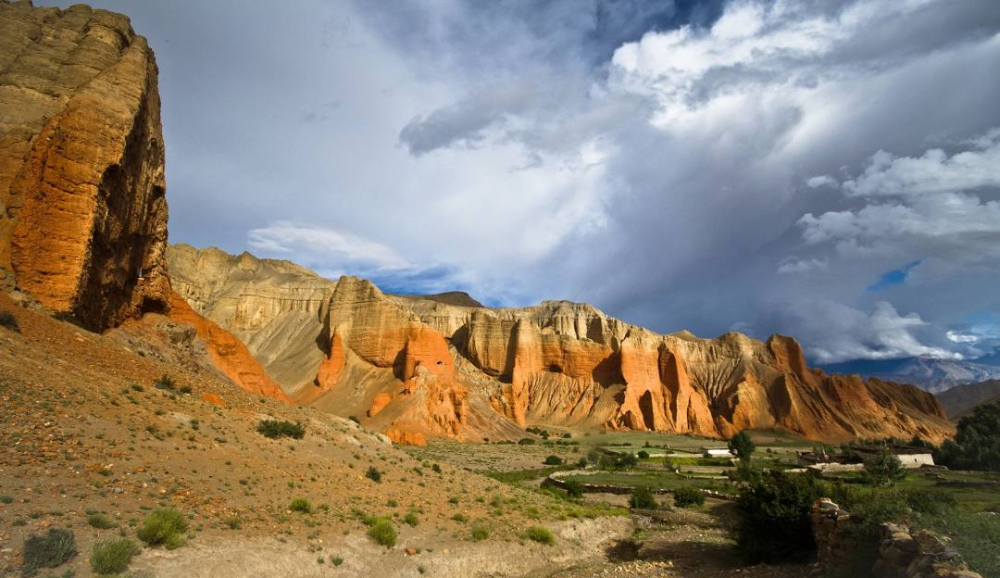
Winter (December- February)
You will get to see snow-capped mountains. During winter, the region is rather dry, so there is no problem with rain. The accommodation will also be available at a comparatively lower price. However, you may experience freezing weather.
Losar is celebrated in the place from Late December to January. It is considered the New Year for the Tibetans.
Festivals that determine the best time to travel to Mustang
Festivals in Mustang are not just celebrations; they are deeply spiritual events that reinforce the community’s connection to their cultural and religious heritage. The Tiji Festival, held in Lo Manthang, is the most famous of these celebrations. It marks the triumph of good over evil and involves a series of ritual dances performed by monks in elaborate costumes. The festival dates back to the 17th century and continues to be a major attraction for both locals and tourists.
Another significant festival is the Yartung, which is celebrated in various villages, including Muktinath and Marpha. This festival marks the end of the monsoon season and includes horse races, archery competitions, and communal feasts. The Yartung is a joyful occasion that brings together the entire community to participate in traditional sports and revelry, reflecting the social cohesion and cultural vibrancy of Mustang.
Losar, the Tibetan New Year, is another important festival in Mustang. It is a time of family gatherings, feasting, and religious ceremonies. Homes are cleaned and decorated, new clothes are worn, and offerings are made at monasteries to ensure good fortune for the coming year. The celebration of Losar in Mustang is a blend of solemn rituals and joyous festivities, encapsulating the region’s unique cultural ethos.
Tiji Festival
Tiji Festival is a grand 3-Day Tibetan-Buddhist festival celebrated in the Forbidden City of Lo Manthang. The term ‘Tiji’ comes from the word Tenchi. Tenchi translates to the meaning of ‘Prayer for World Peace’.
The festival links to the legacy of Dorje Jono and Padmasambhava. It is a long ritual that consists of prayer chants and colourful masked dances.
On the first day, the locals prepare to start the festival. One can hear loud horn sounds from the Tibetan horns, also known as Dhungchen. The ceremony starts at the monastery and includes local monks and performers. The monks sit under the large Thangka painting hung on the southern wall of the square. After this, the “Tsa Chaam”(Masked Dance) starts which tells the victory of good over evil.
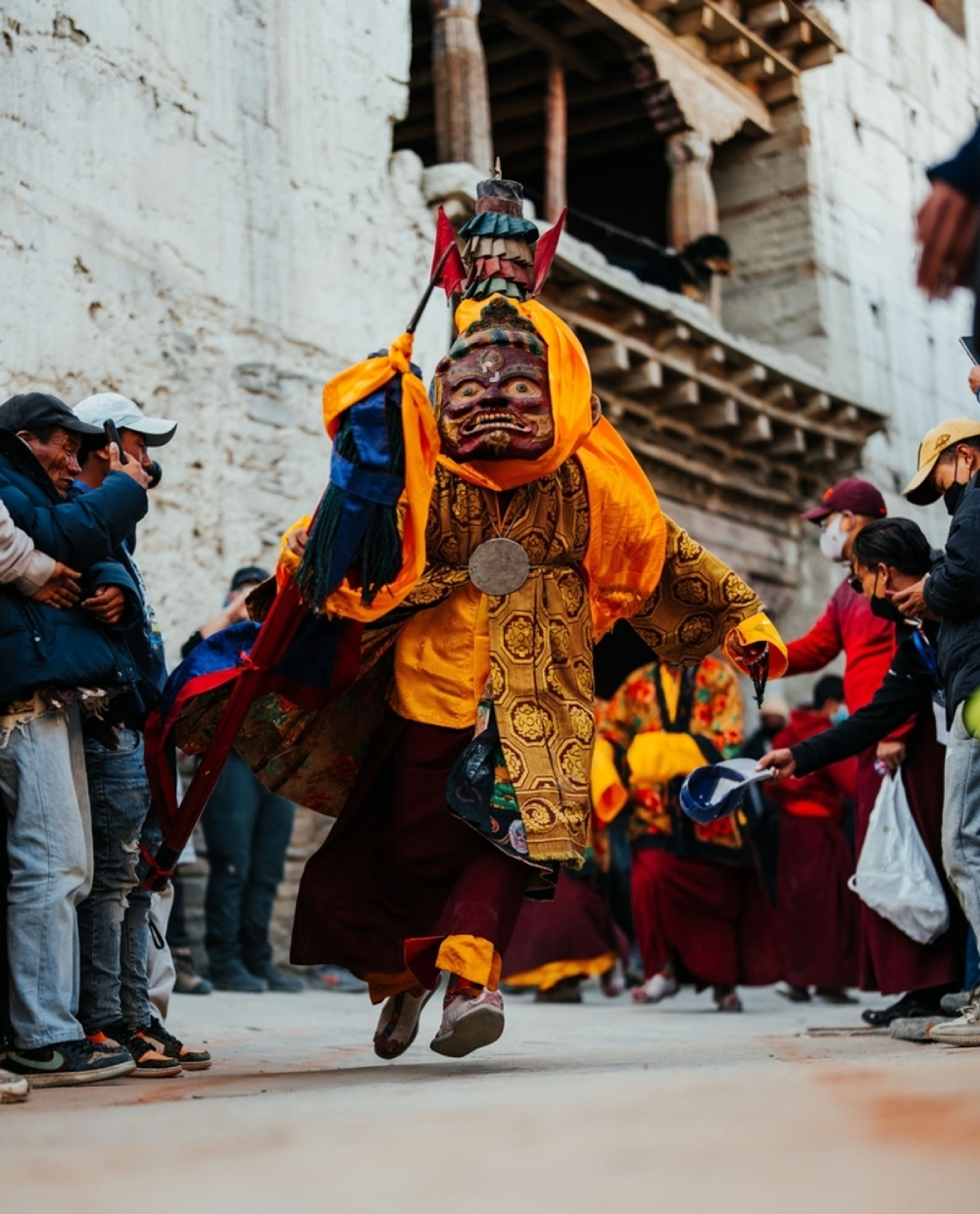
On the second day, the monks perform the “Nga Cham” dance. The second day tells the story of Dorjo Jono, who tried to bring a demon to the Buddha Realm.
Females dance in their traditional attire and jewellery. The second-day performance is significant. It showcases the generation of celestial palaces and deities.
The third day starts with ceremonial music followed by a masked dance called “Rha Chaam”. This dance shows the end of the Demon. The closing ceremony is more vibrant, filled with dance and music.
Yartong Festival
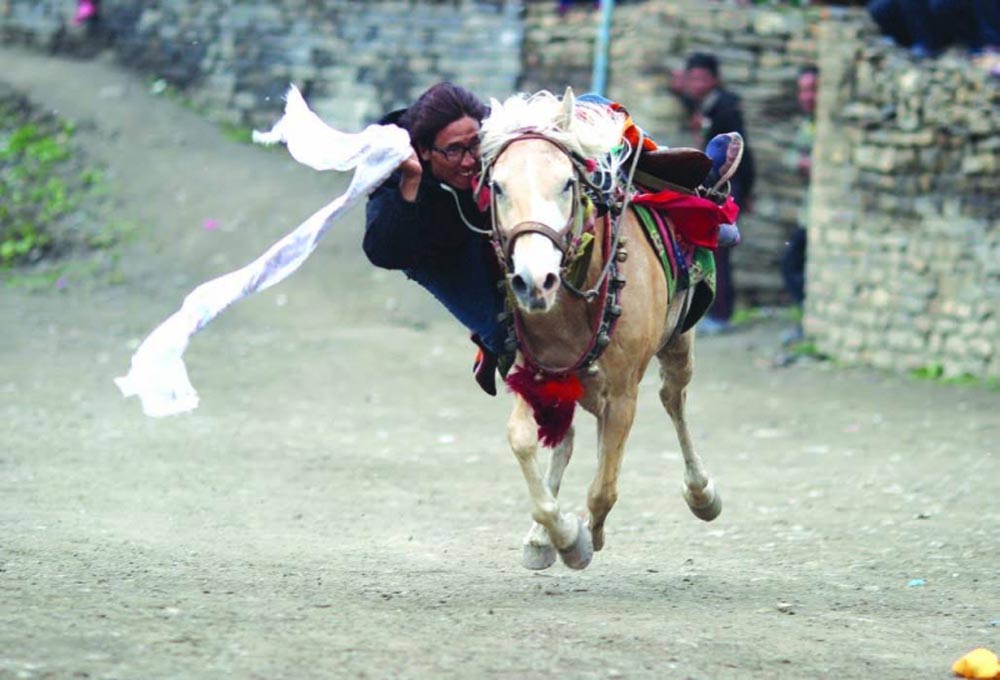
In the Tibetan language, Yartong refers to the end of the summer. The festival is a kind of a fair. Thus, The Yartong Festival literally refers to a fair/festival celebrated to bid to the summer. The chief and the senior individuals of the locality bless the younger generations. The date for the Yartung festival is set by a Lama who is considered a spiritual master. Typically, it is observed on the full moon day at the end of September.
A fair is conducted by the locals and the monks which consists of competitions like Horse racing. Many other competitions are held, too. Travelers get to taste traditional Tibetan food during the festival. This festival lasts up to three days.
How to Reach Mustang in Nepal?
Travelling to Mustang offers various options depending on your budget, time, and level of preparation. For a more comfortable and exclusive journey, flying into Jomsom and then continuing by jeep is a convenient choice either by a helicopter or a twin-otter flight. Alternatively, for a more budget-friendly option, you can opt to travel entirely by road. If you seek a more luxurious experience, a private jeep offers a comfortable road trip option.
For those craving adventures, hiking to Upper Mustang is an option, though it’s not the most recommended route for most travellers due to its challenging terrain.
Related: How To Do A Luxury Bhutan Tour?
How to get to Mustang in Nepal?
This journey shifts you from the bustling city life of Pokhara and Kathmandu to the secluded area of Lo Manthang:
Fly to Jomsom and start the tour
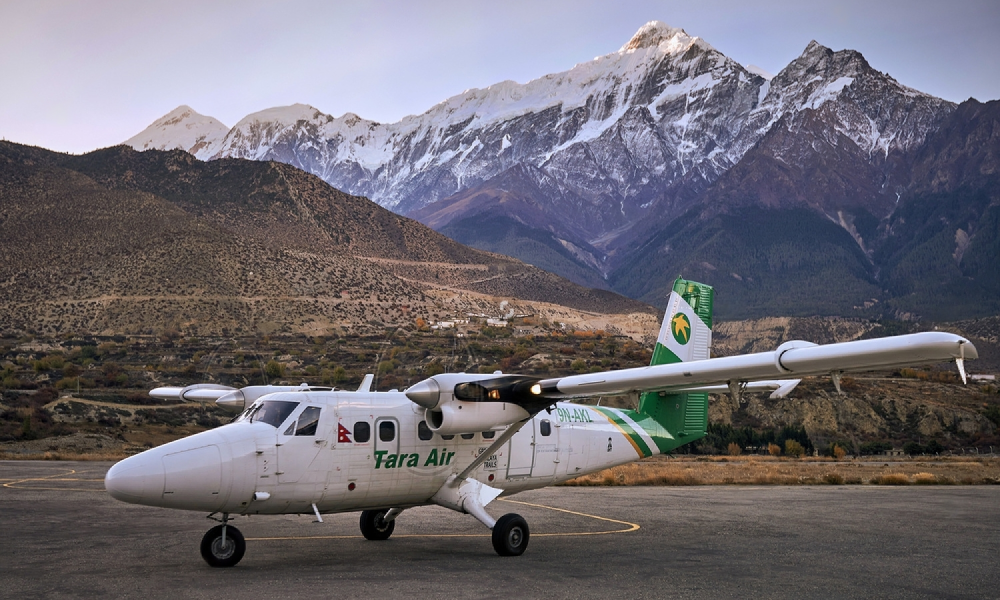
Start with a direct flight from Kathmandu. If you're coming from Pokhara, catch a 20-minute flight to Jomsom, offering breathtaking views of the Annapurna range.
Once in Jomsom, you can travel by private jeep to explore sites such as Kagbeni, Muktinath, and Lo Manthang. Alternatively, for a more immersive experience, consider trekking from Jomsom or Kagbeni to start your journey through the Upper Mustang.
By Helicopter
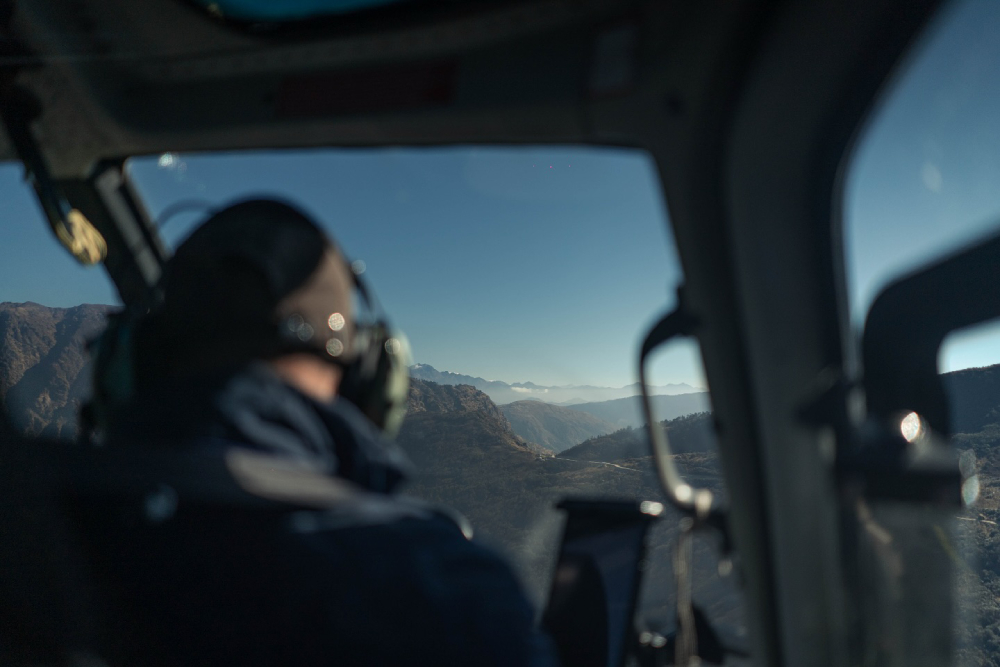
Travelling by helicopter is an exclusive idea. However, the commercial shuttles only go up to Muktinath.
Everest Luxury Holidays’ aviation-based journeys to Mustang are operated by helicopter directly from Kathmandu or from Pokhara, depending on the choice. These aviation journeys are made for the visit to Muktinath for time-concerning travellers. Beyond them, our signature journey of Wellness trips at
Shinta Mani Mustang's Trip also includes a helicopter Transfer.
Beyond these locations, our private jeeps are always available to give you a great tour of Mustang in Nepal.
By Road Transportation
Many adventurers prefer road transportation. You can fly from Kathmandu to Pokhara and then continue your journey by road.
By Private Jeep
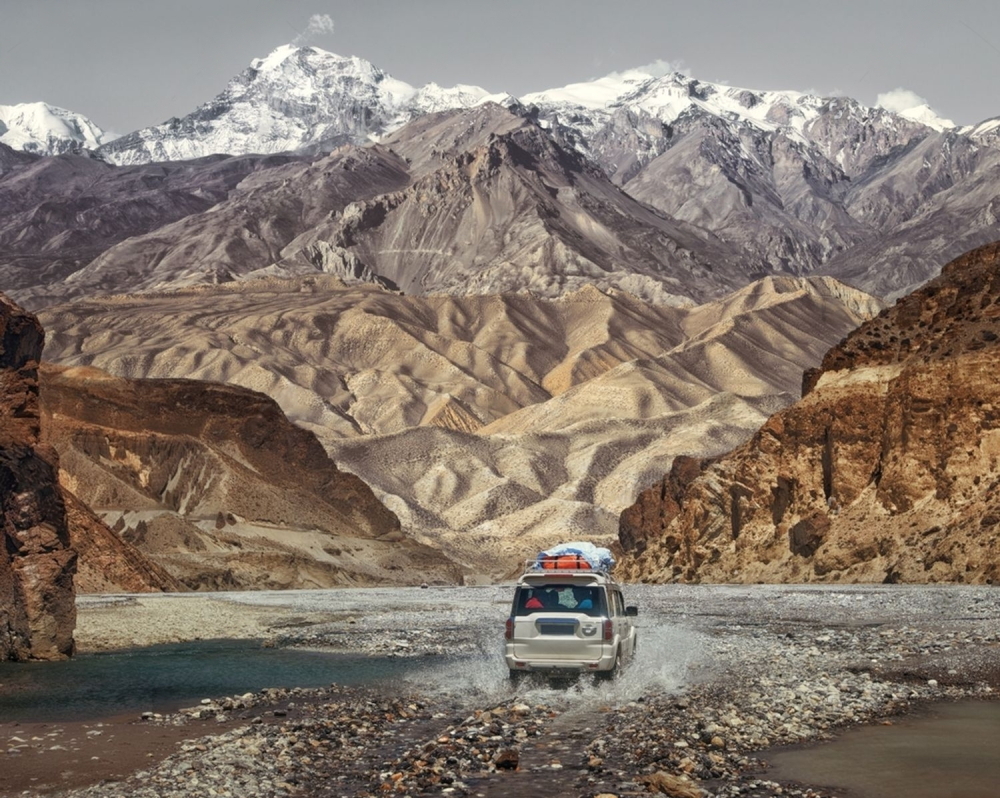
The private jeep tour is the best way to explore the Mustang region, offering flexibility to stop and admire stunning views. As there is no direct route from Kathmandu, the journey begins with either a flight or drive to Pokhara.
From Pokhara, the trip continues to Kagbeni, following the Jomsom highway. Along the way, you’ll pass through places like Tatopani, Ghasa, Lete, Kobang, Marpha, and Jomsom. The route offers incredible views of Dhaulagiri, Annapurna I, South Nilgiri, and more, especially from Lete.
From Kagbeni, the path to Ghami passes through Chhusang and Chele, where you can catch sight of the Kali Gandaki Gorge. The Sky Cave can also be spotted in Chhusang. The journey from Ghami to Lo Manthang takes you through Dhakmar and Ghar Gompa, where you can learn about Tibetan Buddhism. The route continues through Tsarang and Syangmoche before reaching Lo Manthang.
Arriving in Lo Manthang will be late in the day, so you’ll stay there overnight. The next day is dedicated to exploring the Chosser Sky Caves and traveling up to the Kora La border.
By Hike
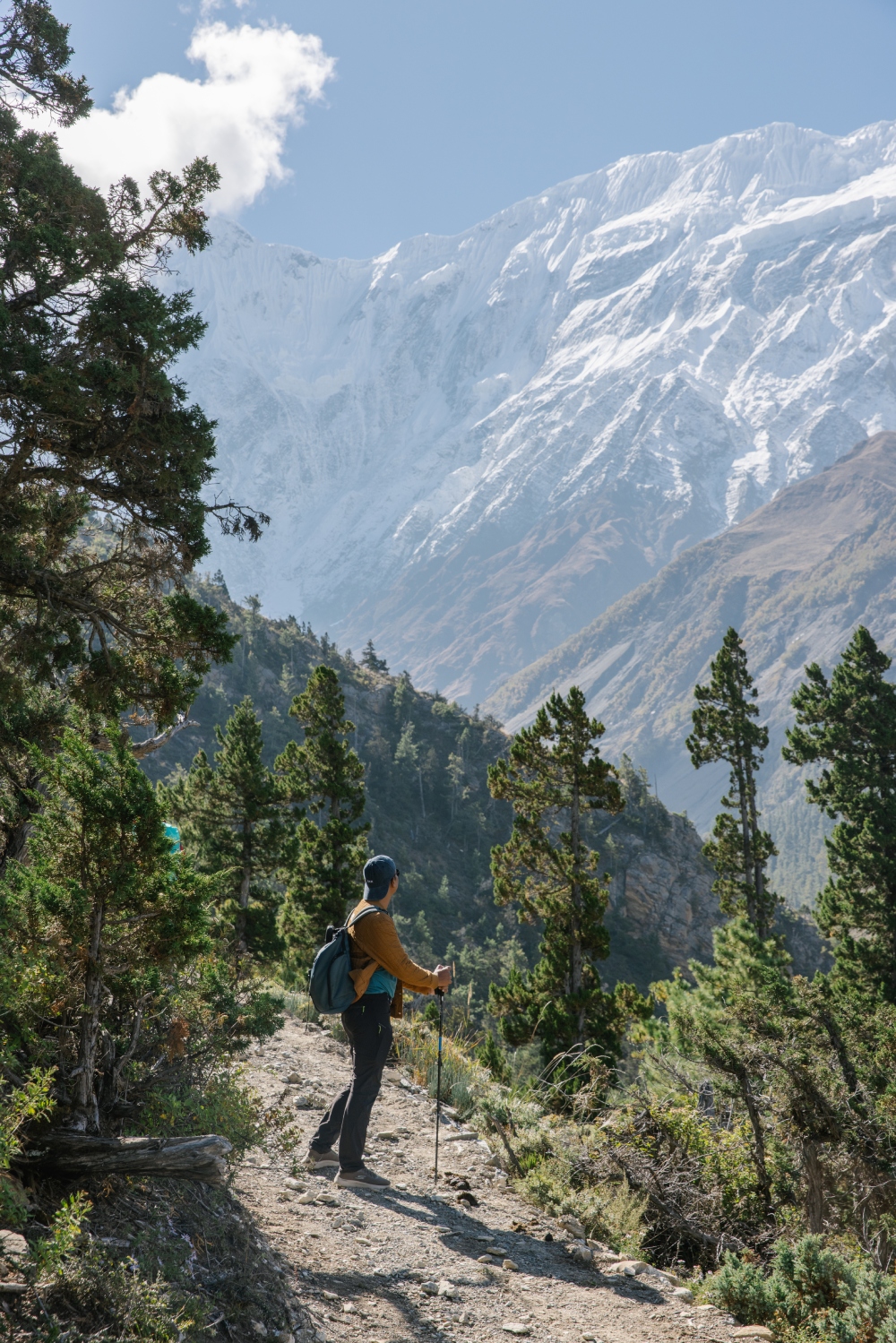
Reaching Lo Manthang by hiking is an option for those seeking a more adventurous route. This moderate trek reaches a maximum altitude of 3,810 meters (12,500 feet). The trek starts from either Jomsom or Kagbeni. From Jomsom, the path leads to Chaile, then Syangmoche, followed by Ghami. From Ghami, the trek continues to Tsarang and finally to Lo Manthang.
However, this trek is not favoured by many. The route often does not follow hiking trails and instead uses the main highway, with only a few hours spent on actual trails. This combination of highway and hiking trails makes this option less popular among trekkers.
Trip Idea for Mustang Tour
There are several luxury ways of travel in the region. From helicopter tours to the lower Valley to the Upper Mustang Trek, you can be involved in the Trip easily.
Visit Lower Mustang
As Mustang district is divided into lower and upper, we will discuss the first come first. To visit Lower Mustang, you have several options like involving in a trek to helicopter tour.
Jomsom - Muktinath Temple Tour
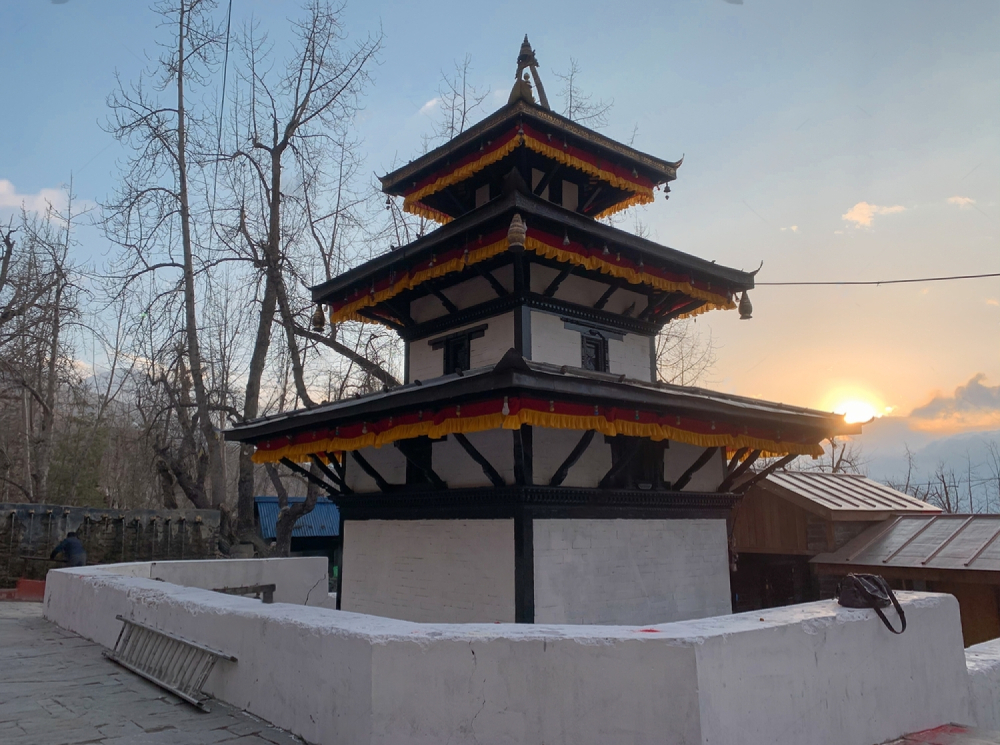
For this tour, you can easily start from Pokhara and go on a drive to Jomsom. It usually takes around 3-4 days to cover throughout. Here is what the itinerary can look like:
Day 1: Drive or fly to Jomsom; stay in Om's Home in Jomsom
Day 2: Drive to Muktinath Temple via Kagbeni; stay in Lo Mustang
Day 3: Drive to Lubra, the only Bon Buddhist Village in Nepal and back to Jomsom; stay in Om's Home in Jomsom
Day 4: Fly back to Pokhara
Muktinath Helicopter Tour
This is another fascinating tour for travellers who want to visit Muktinath Temple but are time-constricted. The 45-minute spectacular flight takes off from Pokhara and lands at Muktinath. You can visit the temple for around an hour and then fly back to Pokhara in the next 45 minutes. Within a day with a scenic flight, the helicopter tour is a perfect luxury choice.
Wellness at Shinta Mani Mustang
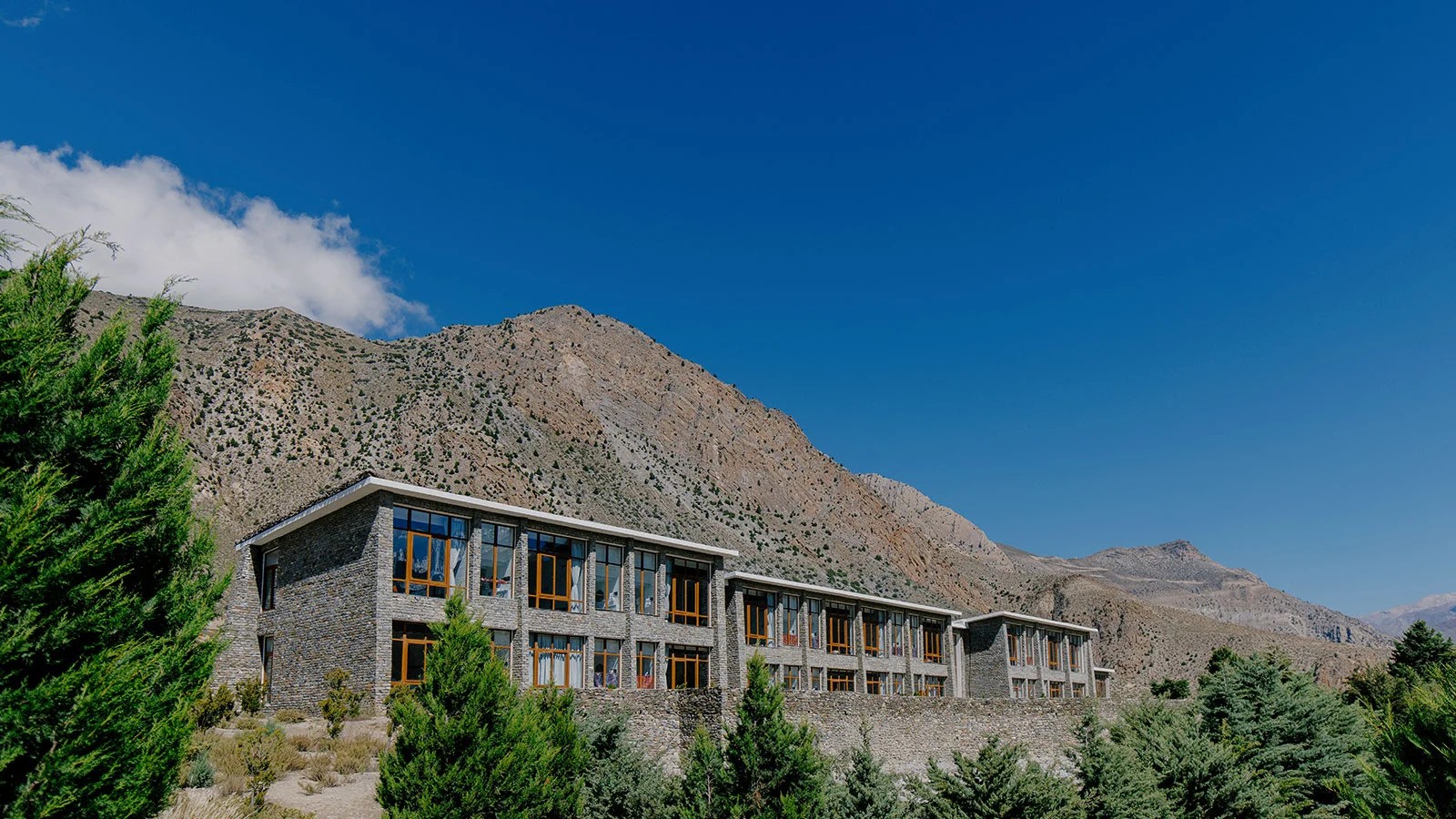
Mustang in Nepal offers even retreats and wellness. With Shinta Mani being open for a while, it is now a luxury traveller's choice to get here. You strictly need at least 5 nights and 6 days to be involved and stay in Shinta Mani Mustang. Alongside wellness, travellers can easily enjoy the beauty of the Mustang region by travelling around Jomsom, Marpha, Lubra, Muktinath, and Kagbeni. You can choose to trek or do the driving tours in the region.
Shinta Mani Mustang also offers the Traditional Tibetan Medicinal process to get involved in wellness with which many Everest Luxury Holidays Travellers have experienced a successful result.
Visit Upper Mustang
The Upper Mustang region, with no doubt, is a journey to the past. With centuries-old ancient Monasteries, the mud-walled city, and local villages, this Kali Gandaki River Valley is truly a fascinating place to travel. Here are the ideas:
Upper Mustang Jeep Tour
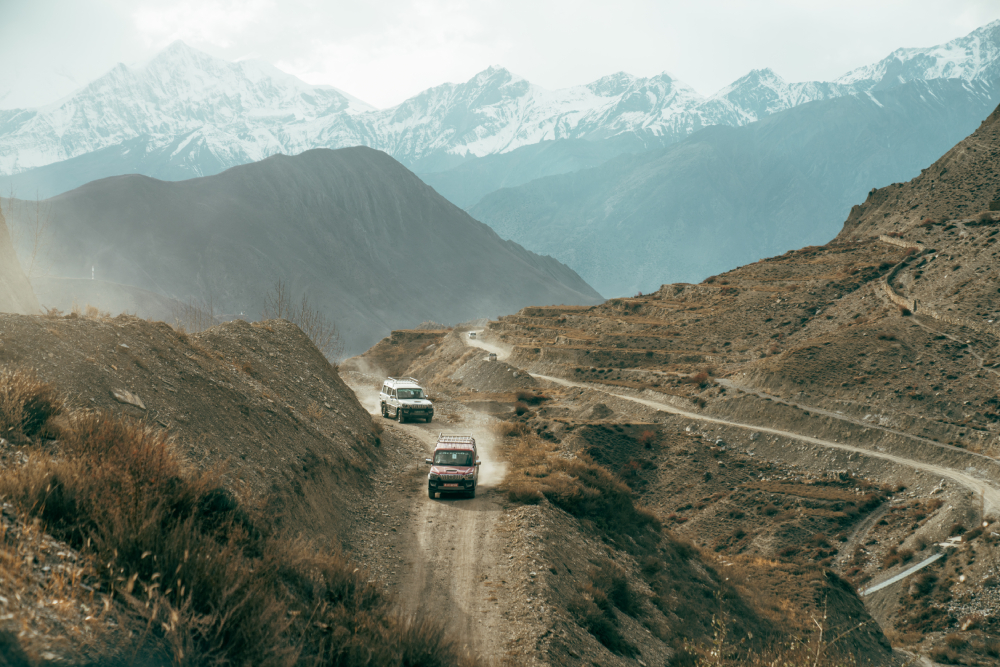
The Jeep Tour is usually for 7 days. You start the jeep tour from Pokhara itself. However, for a more luxurious option, you can choose to fly to Jomsom by a scenic flight of 15 minutes from Pokhara. Upper Mustang is a preserve of Tibetan Buddhism in Nepal. During the tour, you visit the ancient walled city of Lo Manthang, stone houses, the world's deepest gorge; the Kaligandaki Gorge, and many more. Here is the trip itinerary:
Explore Mustang
Day 1: Drive or fly to Jomsom and drive to Marpha Village
Day 2: Drive to Ghami via Kagbeni and Chhusang, hike up to Chungsi Cave Monastery
Day 3: Drive to Lo Manthang via Dhakmar and Ghar Gompa
Day 4: Drive to Chhoser sky caves, explore Lo Manthang
Day 5: Drive to Ghami via Tsarang and Marang Village
Day 6: Drive to Kalopani for the best view of the Dhaulagiri and Annapurna range
Day 7: Drive to Jomsom and fly to Pokhara or directly drive to Pokhara
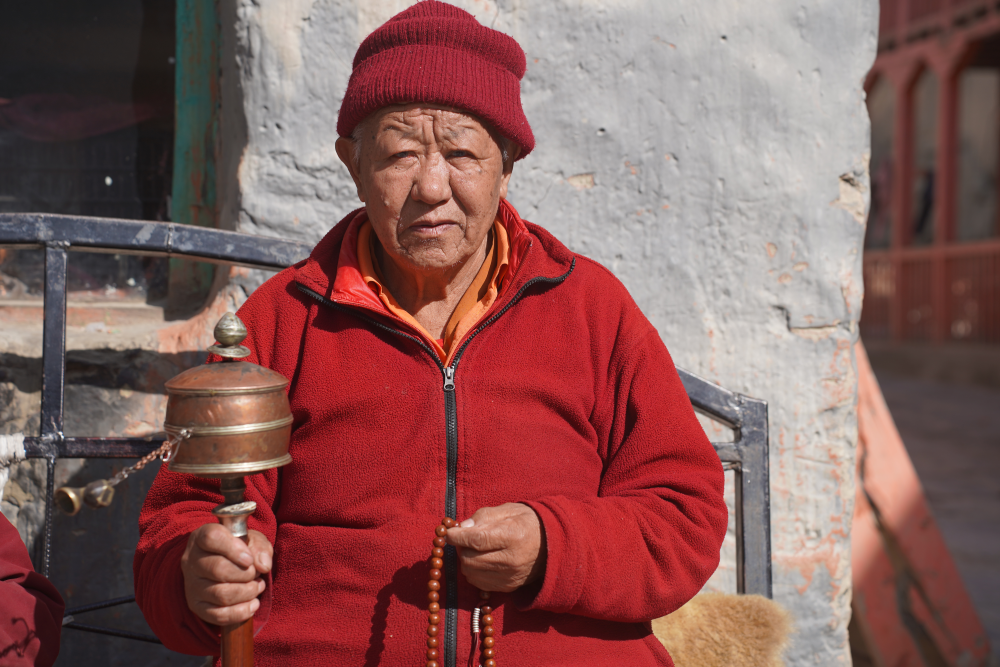
Conclusion
Mustang in Nepal is a place where time stands still, offering a rare glimpse into an ancient way of life. From its timeless culture to its breathtaking landscapes, every corner of this region tells a story of history, spirituality, and resilience. Whether exploring the walled city of Lo Manthang, witnessing age-old festivals, or trekking through its surreal terrain, Mustang in Nepal promises an experience unlike any other.
Start your journey to Mustang with Everest Luxury Holidays here.



